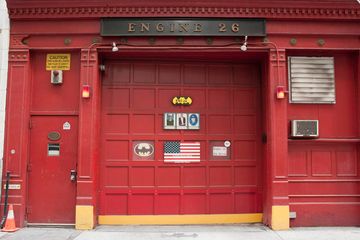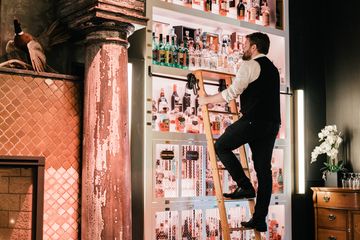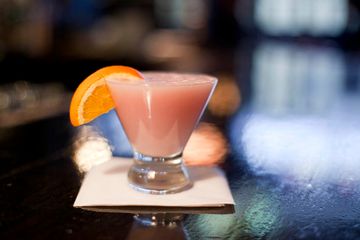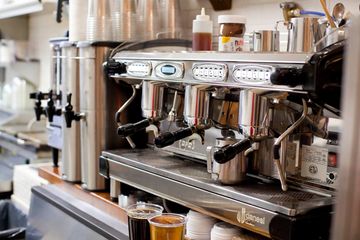I could not resist getting caught up in Clare’s enthusiasm as this Manhattan Sideways team member spotted Mood Fabrics, a second floor shop on 37th Street. Having never watched “Project Runway,” I was clueless about this business, but eager to share in her excitement as we ascended in the elevator. Walking the aisles with her, I decided that there was no one more appropriate to do a write up than this adorable college student from California:
When I visited Manhattan with my mom a number of years ago, the hit TV show “Project Runway” was our latest obsession, and we made visiting Mood a high priority on our to do list. Project Runway is a reality show where aspiring designers compete for the chance to show a collection at New York Fashion Week. The series uses Mood as its source for all the fabrics and materials the designers need to create pieces for the various challenges over the course of the competition. My mom and I eagerly explored the countless aisles of Mood, admiring the gorgeous colored fabrics and vast assortment of buttons and ribbons.
We certainly stood out as tourists among the many knowledgeable people strolling the floors asking for “ten yards of this” and “eight yards of that,” but we made an attempt to blend in by buying a yard of what we thought was the prettiest ribbon in the store. We also could not resist buying a T-shirt printed with Project Runway mentor Tim Gunn’s famous phrase “Thank you, Mood,” and I am guilty of taking a photo with Swatch the dog, who has made many guest appearances on the show.
Visiting the store again a few years later, I still had just as much fun getting lost in the maze of roll after roll of fabric stacked up to the ceiling. Watching fashionable design students measure out just the right amount of material made me wish I could make lovely clothes to show off on the runways at New York Fashion Week! My second time around at Mood, I was also thrilled to learn a bit of the history behind the famous fabric store.
Much more than just a business whose popularity expanded outside of the fashion world with the airing of Project Runway, Mood Designer Fabrics began with designer Jack Sauma in 1991. He grew up in Lebanon and Sweden, and moved his family to New York, opening Mood originally as a fabric wholesaler. It was not until 1993 that Mood started to do retail sales, and once it did business grew so quickly that by 2001, they had to move into their current space of 40,000 square feet.
In 2015, it has expanded even further, adding a sewing school downstairs where classes are taught by past Project Runway contestants, and a collection of online videos and workshops are now available, called “Mood U.” The store has dramatically increased many of its sections, including trim, silk, and polyester, and it has also added an art department. In the future, Mood will introduce its own custom line of sewing machines to complement the addition of classes and supplies.
Mood has a second location in Los Angeles, but the Manhattan location remains the flagship of the business, drawing a constant flow of customers – from students in fashion school to designers, to people who simply love to sew. Currently, Mr. Sauma’s two sons oversee Mood and its online retail site. I could not help picturing the Project Runway competitors running frantically up and down the stairs of Mood in search of the perfect material as I wandered through the store, and I felt compelled to imitate Tim Gunn as we headed towards the elevators with a wave and an approving “Thank you, Mood!”



